When I first started getting into modern board games (over a decade ago at university!), my group of friends had a few that we played again and again – being poor students we weren’t exactly grabbing the latest releases or adding to the collection frequently. So when one of the group got a copy of Uwe Rosenberg’s Agricola, it was a cause for much excitement and solidified a love of the worker placement genre in me and several friends. On top of that, Patchwork was released a few years later and became a firm 2-player favourite at all the gaming tables I frequent.
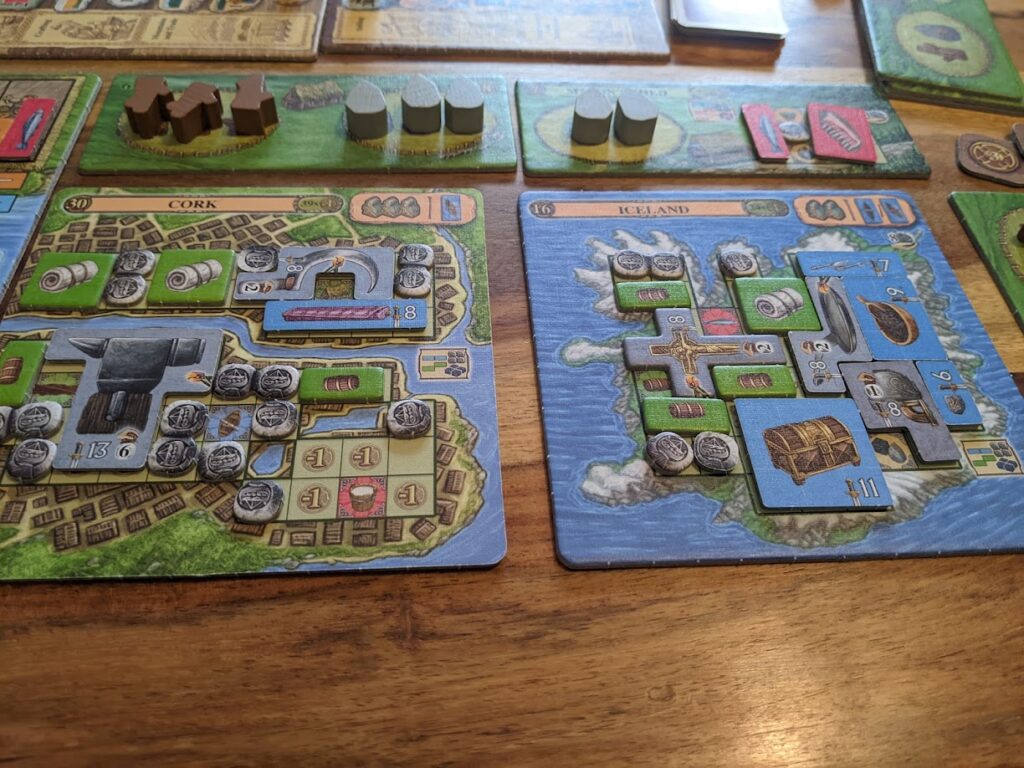
So when some friends mentioned playing A Feast for Odin at UK Games Expo one year, I was excited. I don’t do a great job at keeping up to date with new releases but the sentence “worker placement with tile laying” had me longing to play. Two things the designer has proved himself adept at and that I enjoy a huge amount, combined into one chunky game with a lovely appealing theme painted on top. Let me at it.
It took some time for the chance to actually come to play it – I just couldn’t find an opportunity to play with anyone who already had a copy. Luckily for me, some friends grouped together and gave it to me for my birthday in 2019. In the 3 years since, it has really cemented itself as one of my top games. I was craving a game of Feast for Odin so much recently that I even branched out into solo gaming for the first time ever.
While I was still thinking about whether I wanted to write about board games and what it would look like if I did, I thought a lot about reviews. While I don’t want to spend too much time contextualising, it did make me realise that I frequently don’t feel like I get a lot out of most “standard” reviews. I don’t want a dry rundown of the turn structure that feels more like a gentle rules intro. I’m embedded enough into board gaming as a hobby to understand phrases like “deck building” or “worker placement” so reading article after article that describes taking it in turns with your opponent to assign workers to actions doesn’t actually help me. I am a lot more interested in knowing about the little details a game has that make you love or hate it. I know for me that often the difference between a game I just quite like and a game I really love comes through in little moments of joy, small details that are just so clever, times where theme and mechanic intertwine in just such a delightful way; these are the things I want to know about, and are the things I think I’ll mostly be writing about.
(Not me saying I don’t want to spend too much time contextualising then writing 500 words of context. Thanks for sticking with me).
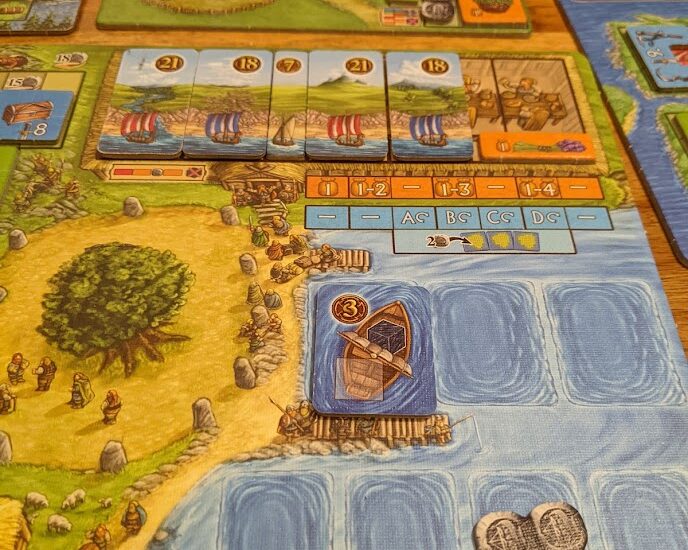
Anyway, A Feast for Odin and the things about it that bring me joy. Not a comprehensive list of the game’s qualities and issues, just one goblin’s reflections on enjoyment.
A Harmony of Mechanics and Theme
There are a couple of things that really make sense in both a thematic and mechanical way. Every round, you take a new viking meeple off your feast board/round tracker. This opens up more space on the feast board because your viking crew is larger and needs more food. It just makes sense. Then, as time progresses you can spend money and ships to emigrate some of your vikings. You flip over the boat tile, put it over the left-most spaces on your feast board, and now your clan needs less food overall because some of them have sailed to distant lands. It’s just so neat.
When you’re arranging resources on your feast board to feed your vikings, adding more than one of the same item has diminishing returns and you’re forced to place it inefficiently. If I was a viking I think my enjoyment in a plate of peas would be much lower if you served me a dinner made entirely up of peas.
The mountain resource strips always go through in order: wood > stone > ore > money (representing here precious gems etc) and I like how this mimics how the world works. If you want to mine up gems or ore, you have to clear the forest, then get through the stone and ore. Not a big deal in any way but just one small detail that adds to my overall appreciation of the game.
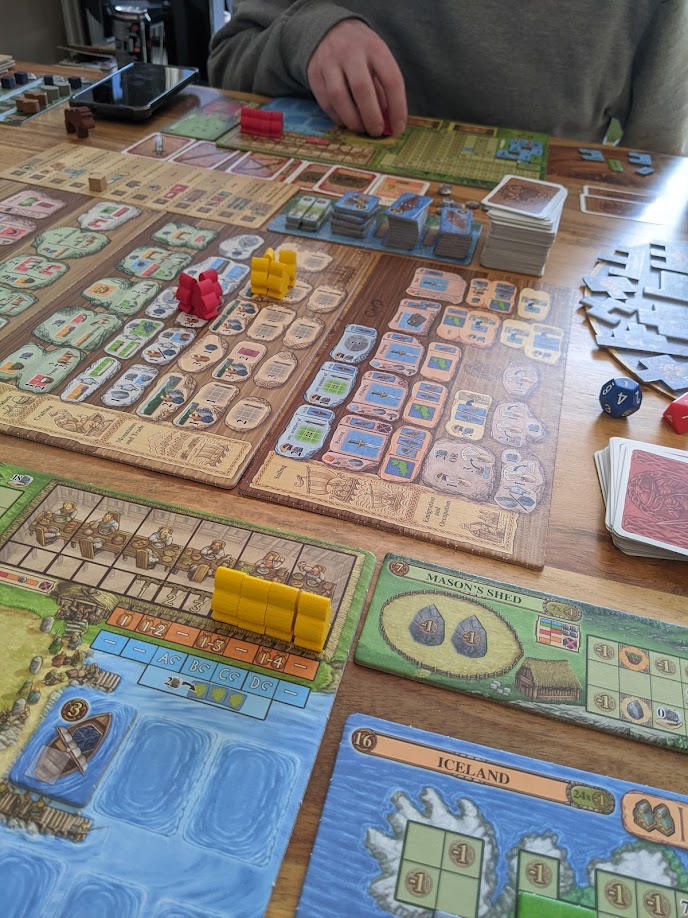
There are a variety of special tiles you can get through the Raiding and Plundering actions. The most difficult of these to acquire is The English Crown, and if you do get it, not only does it take up a lot of space on your board, you also get two bonus points, which have their own special row on the scorepad. I find this highly amusing.
Design and Attention to Detail
I really like the way A Feast for Odin uses both sides of most of its tiles to convey information (aside from the fact that if it didn’t, the sheer quantity of tiles required would be simply absurd). I know it can be tricky for people who like to fiddle with their game components because keeping them the right side up is really important, but it works really well for me. I like this element of design so much that when the expansion (A Feast for Odin – The Norwegians) added new tiles to emigrate the smaller whaling boats, I was a little disappointed that they didn’t fit in with every other component to have their “progression” simply require flipping the tile (even though it makes perfect sense because the whaling boats are a different shape tile to the other boats which can be emigrated).
The first player token is a lovely chunky tactile moose. There is no reason for it to be a moose, there are no other moose in the game and no overarching moose theme, you can get sheep, pigs, cows, and horses but no mooses. The first player marker makes me happy.
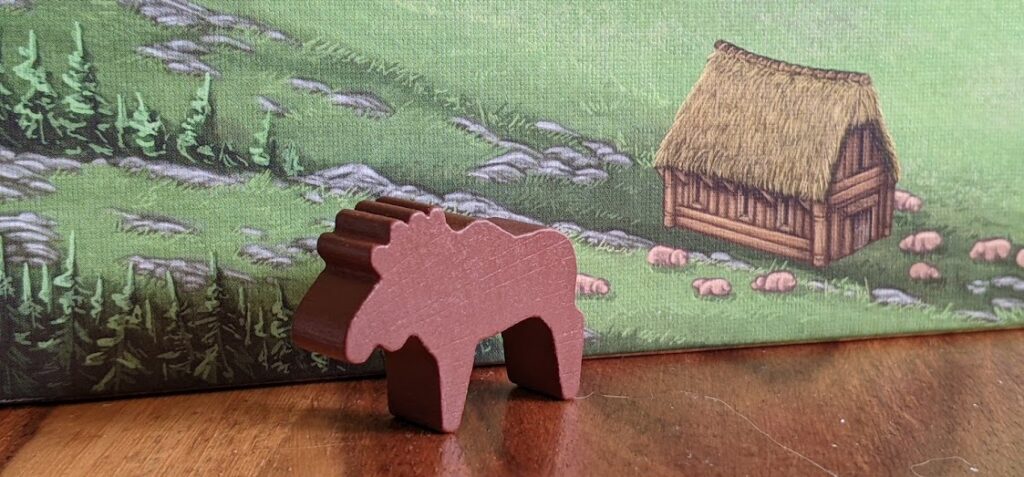
There are tiny visual easter eggs on the player boards. One of them has a dragon, one has a whale, one has some trolls, and one has some folks playing in a tree. I like that the game has a lot of colours that are very distinct from each other – there are a lot of components and anything that speeds up the visual filtering is useful.
In a move that might surprise and shock fans of the “eurogame” genre in general, there are some actions in A Feast for Odin that rely on dice rolls. However I really like the way they work – you’re never beholden to the rolls entirely because the game gives you plenty of ways to mitigate or even supplement rolls. Even if you do completely fail to achieve your goal, you get something that will help you next time you need to roll, and in some cases, you even get workers back. In my mind this works like, normally after you catch a whale you also need people to prep the carcass into usable materials. If you don’t catch a whale, those vikings get a day off to help with other chores.
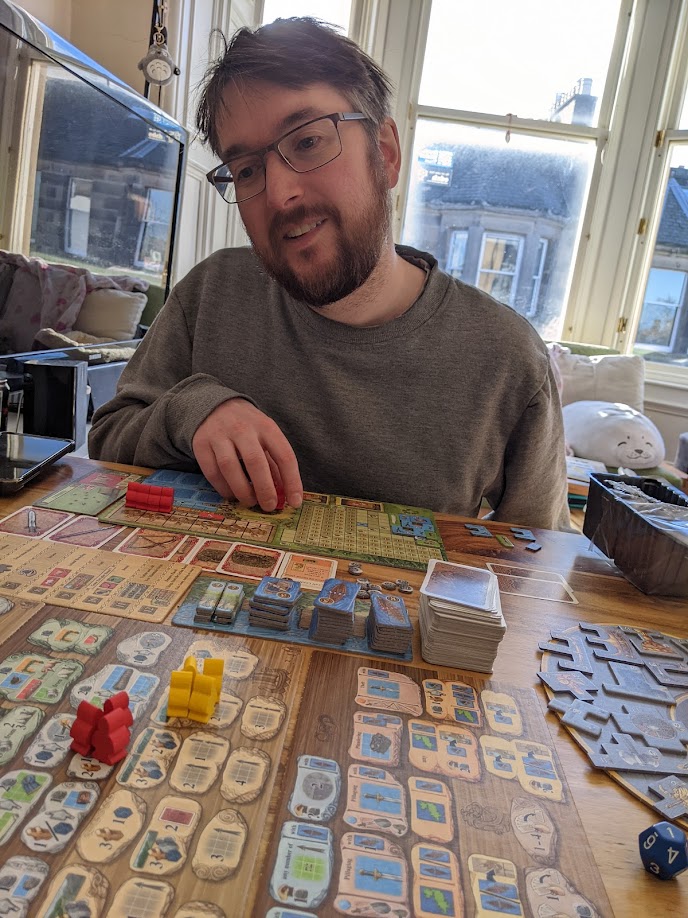
The game includes a massive stack of occupation cards of various kinds, and while there are a number of very valid criticisms to be levelled here (namely around how unbalanced they seem), I love how much variety there is. I particularly enjoy how some of them will provide a small boost and how some of them can be worth building an entire strategy around. I’m also extremely grateful for the thorough appendix, which explains every card and doesn’t leave you to rely on interpretation.
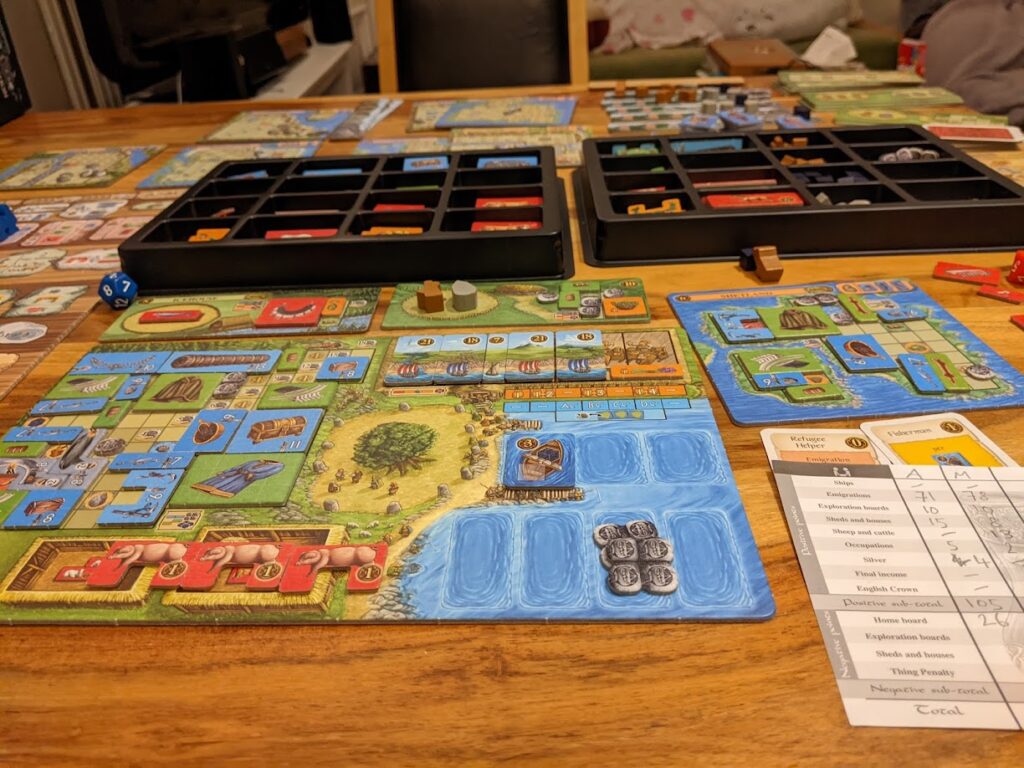
Bigger Picture
On top of all these relatively small things that add up to make a really enjoyable experience, the game does two big things that for me make it more interesting than many other worker placement games. Firstly and I think most significantly, the game feeds all the players additional workers at a steady rate every round. In most worker placement games success is often intrinsically linked to who can get the first extra workers. The value of additional actions is so high that usually everyone is beelining the same early goal – get more workers. A Feast for Odin eliminates this funnel and as a result, it feels like there is less punishment and more possible reward for doing something more niche. The other thing A Feast for Odin does differently is making all the actions available from the get-go. I know that some people don’t enjoy this – it can make the game feel overwhelming and can diminish the tactical element of trying to beat other players to a newly revealed, highly lucrative action. However, I think this aspect makes me much more likely to try out a variety of strategies in the game. I don’t have to wait until halfway through the game to try out something strange, with no space to pivot if it doesn’t work out. I can definitely see why this isn’t everyone’s preference, but for me, it really makes the game more enjoyable, less stressful.
Lastly, and I think this is something that will come up more than once as I write about games, I think everything is a bit more fun if you bring the story-creation element of the game Gloom with you. A Feast for Odin is a game that will see you spin an epic tale of starting a mason or a beekeeper and end up a seafaring pillager attempting to conquer new lands and steal The English Crown.
Plus, both of my cats can fit in the box.
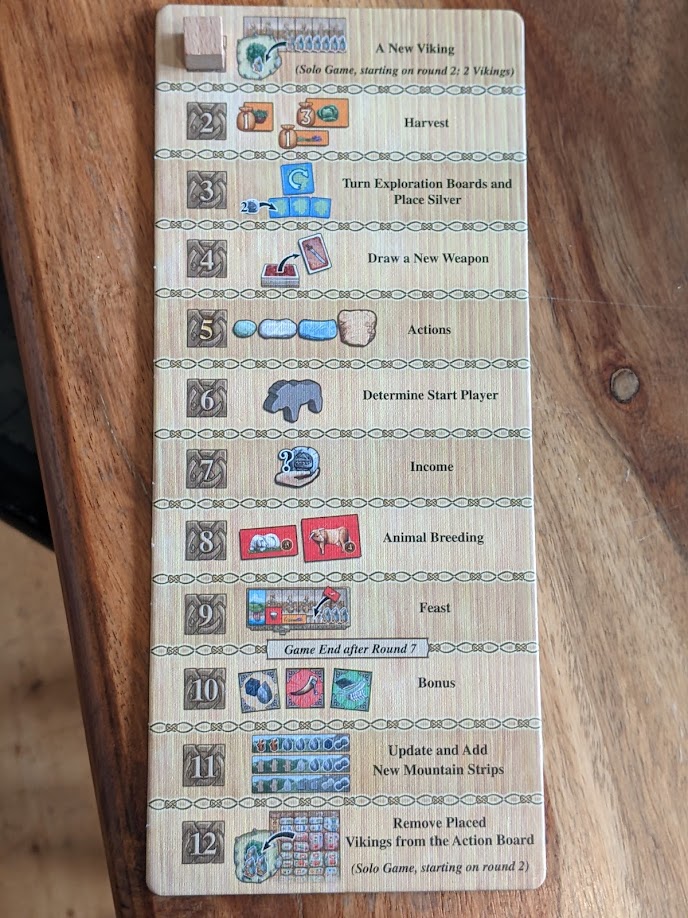
P.S. my spellchecker is determined that ‘vikings’ should have a capital V, but I agree with this post about whether or not you should capitalise “viking”.

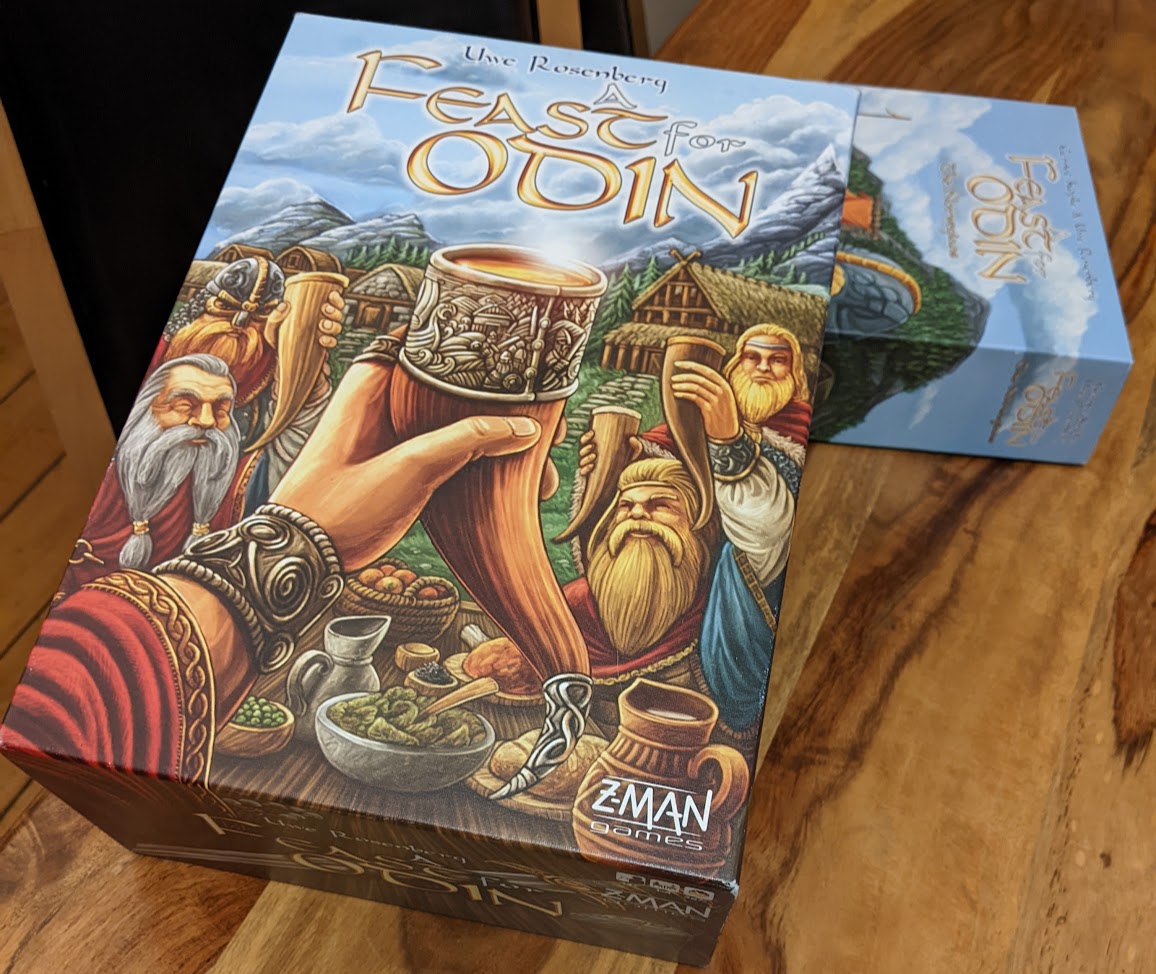
6 replies on “A Feast for Odin Review”
Ew who’s that gremlin in the picture
But seriously I do love this game. I know what you mean about potentially getting overwhelmed with the different number of actions available – it’s a blessing and a curse, I love being able to choose multiple different things to focus on, keeps the replayability factor high. But sometimes I get brain overload with the amount of choice available.
Yeah you know I can get a bit of brain freeze with this one. It’s often a case of knowing what I want to do but taking a while to figure out the “optimal” way of getting there.
I v much agree with your points re. workers being drip-fed vs from an action, and the ‘race to first action’ – both things that get wearing in Agricola over the years now.
I feel like having all the actions available from the start is actually just a newbie trap.
I know it definitely made me appreciate Agricola/Caverna’s method of revealing the actions during the game. Like, you can easily imagine that it’s just pointless to have all of those actions available from the start. (e.g., No one would ever Wish For Children in Caverna until the third or fourth round at the earliest anyway.)
[…] A Feast For Odin board game review […]